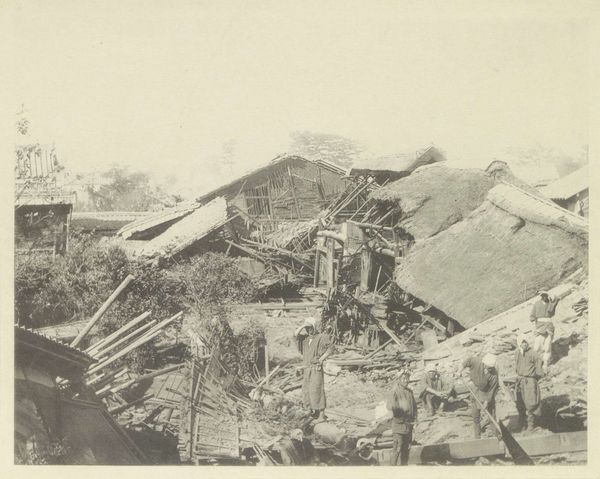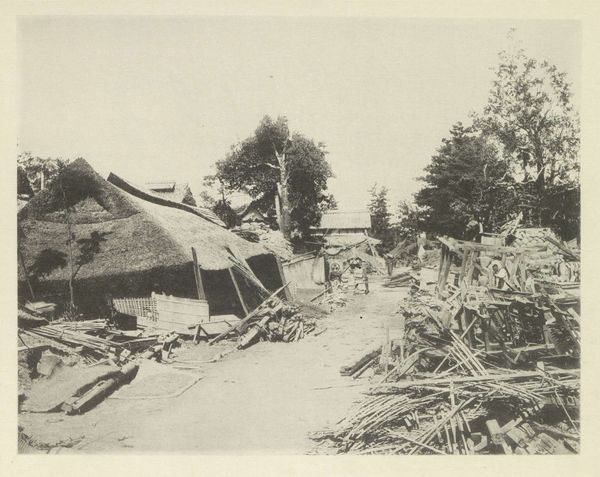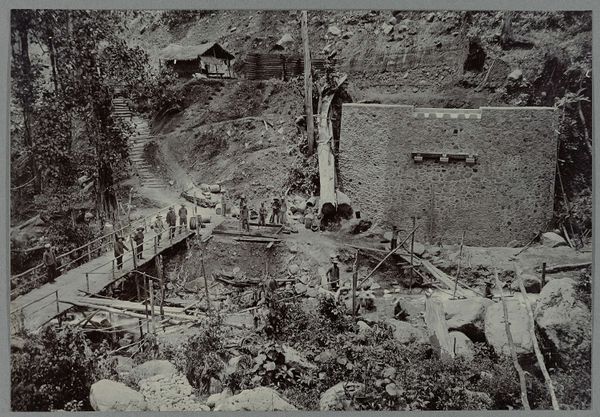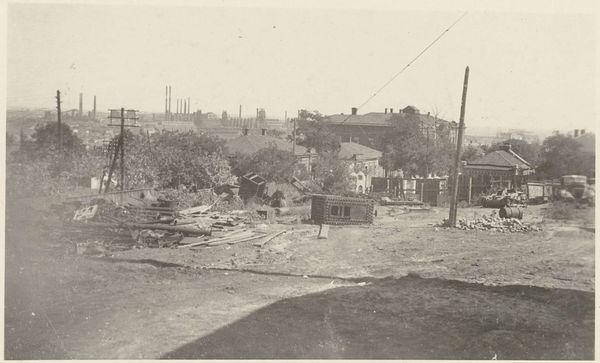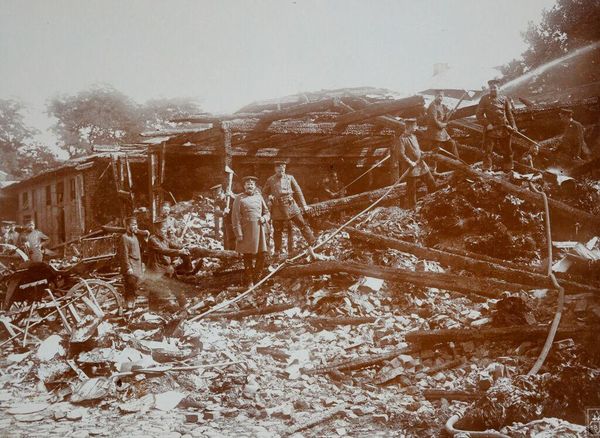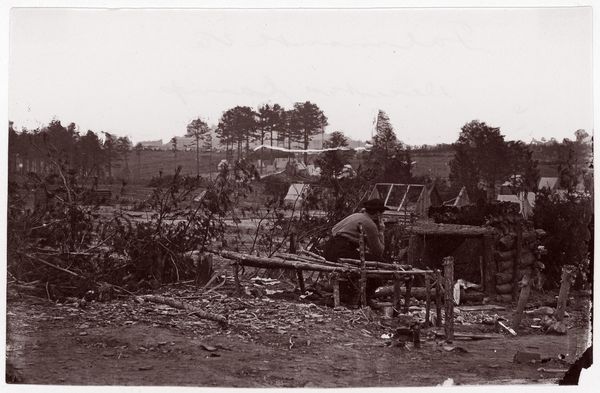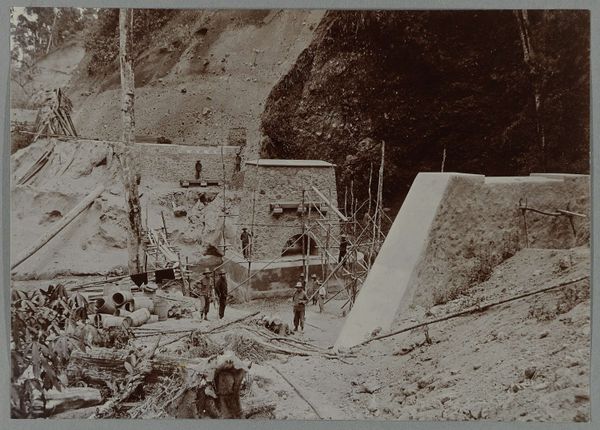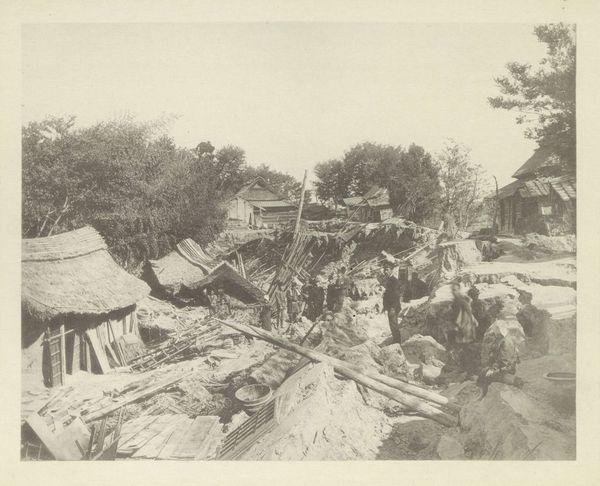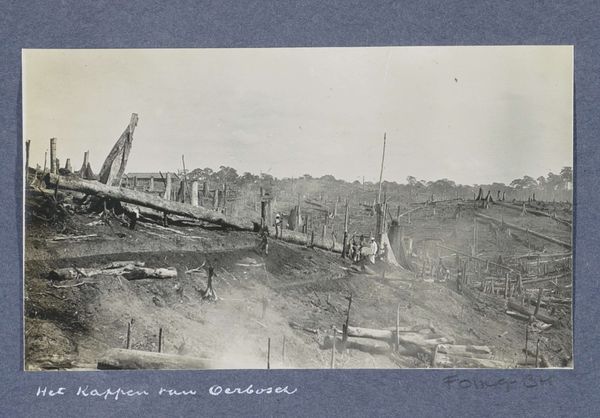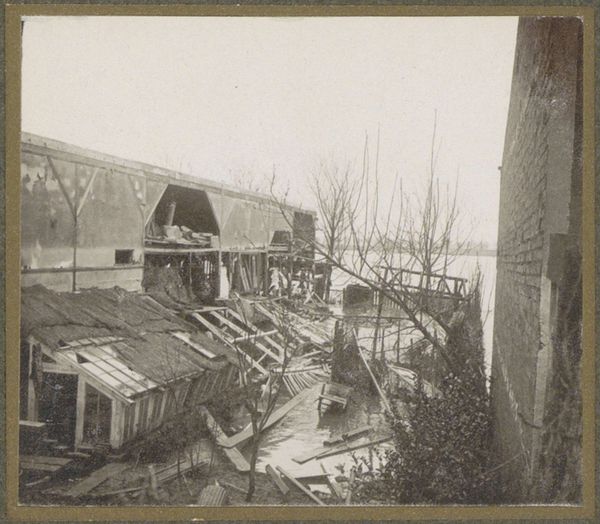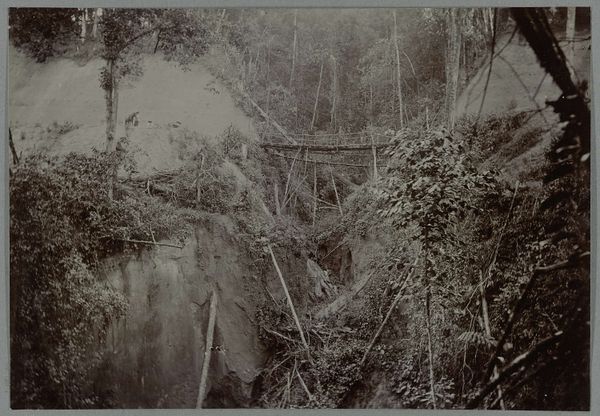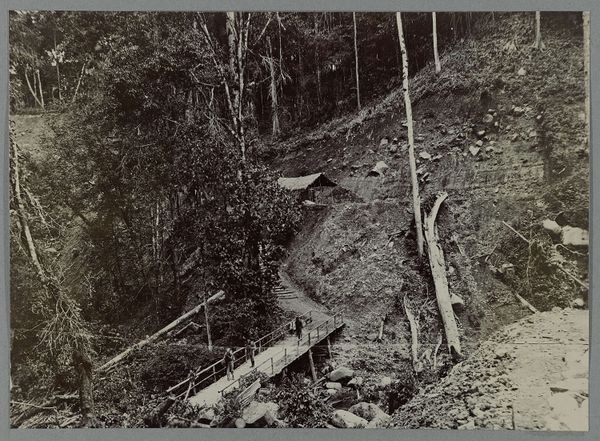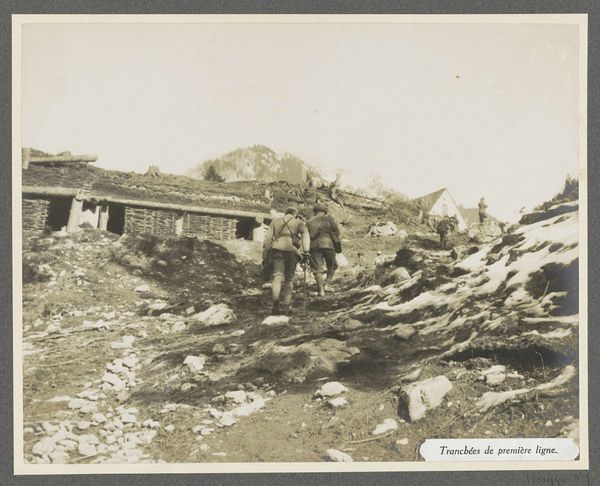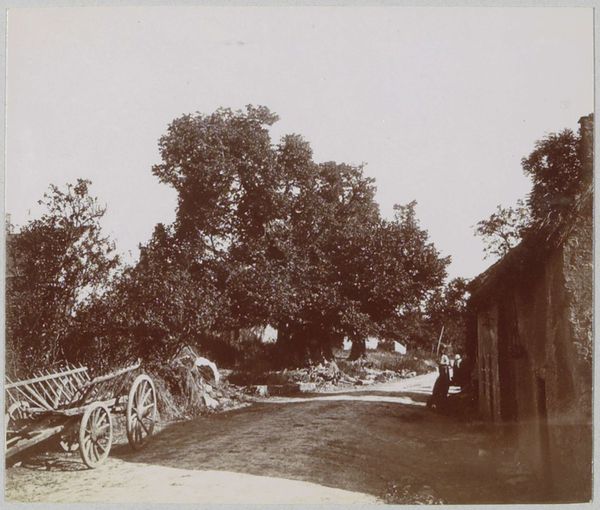
print, photography
# print
#
asian-art
#
landscape
#
photography
#
photojournalism
#
realism
Dimensions: height 230 mm, width 288 mm
Copyright: Rijks Museum: Open Domain
Editor: Here we have an anonymous photograph titled "Verwoeste woningen in de Neo-vallei in Japan na een aardbeving" (Destroyed houses in the Neo Valley in Japan after an earthquake), dating from before 1892. The monochrome palette gives it a stark, desolate feeling, doesn't it? How do you interpret this photograph, given the social and historical context? Curator: It’s crucial to remember that photography in the late 19th century wasn't merely about documentation; it was about power. These images of devastation, framed within the context of Japanese modernization and Western gaze, raise important questions about representation and vulnerability. What does it mean to look at this destruction through the lens of an anonymous photographer, potentially catering to a Western audience hungry for the exotic and the catastrophic? Editor: That's a really interesting point. I hadn't considered the Western gaze so explicitly. So, is this photograph potentially reinforcing certain stereotypes or power dynamics? Curator: Precisely. It’s vital to unpack how this imagery could have been used to portray Japan, its people, and its resilience – or lack thereof – within colonial discourses. Were these photographs intended to elicit empathy, or were they meant to solidify a sense of Western superiority in the face of natural disasters? Editor: It's troubling to think about the potential exploitation embedded in this image. But it also makes me consider the resilience of the people affected. Curator: Absolutely, and finding that balance is key. This photo acts as a portal to ask further questions about how marginalized communities are affected in times of catastrophe, and to spark needed discussions around disaster relief, resource allocation, and community resilience, still very much relevant today. Editor: I've certainly gained a new perspective on viewing historical photographs. Curator: Indeed, it’s about looking beyond the surface and interrogating the deeper, often uncomfortable, layers of history and power embedded within seemingly simple images.
Comments
No comments
Be the first to comment and join the conversation on the ultimate creative platform.
